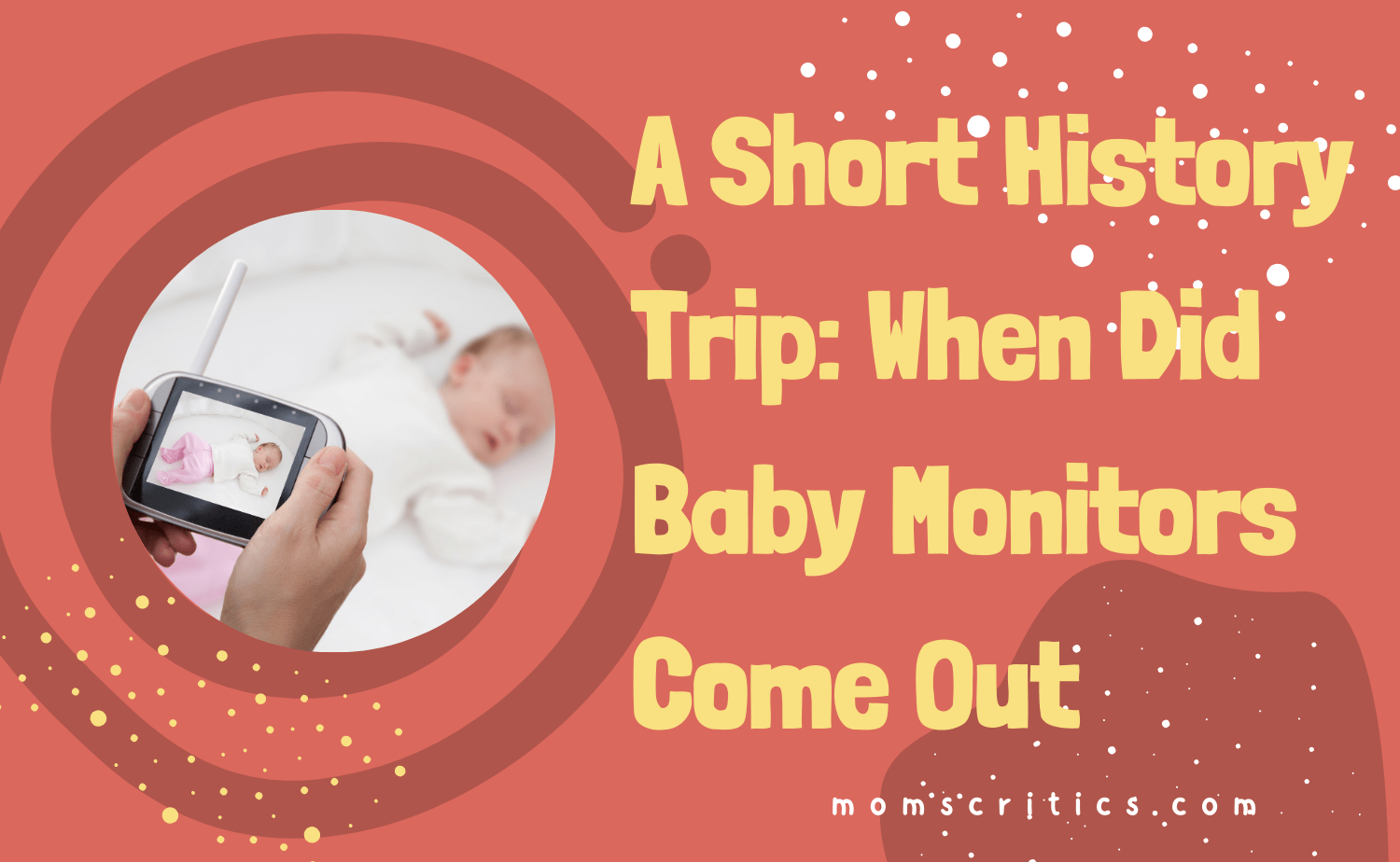When did baby monitors come out? In the realm of parenting essentials, baby monitors stand as silent guardians, offering parents peace of mind while their little ones slumber.
But have you ever wondered about the inception of baby monitors? Join us on a concise journey through history as we explore when were baby monitors invented and their evolution.
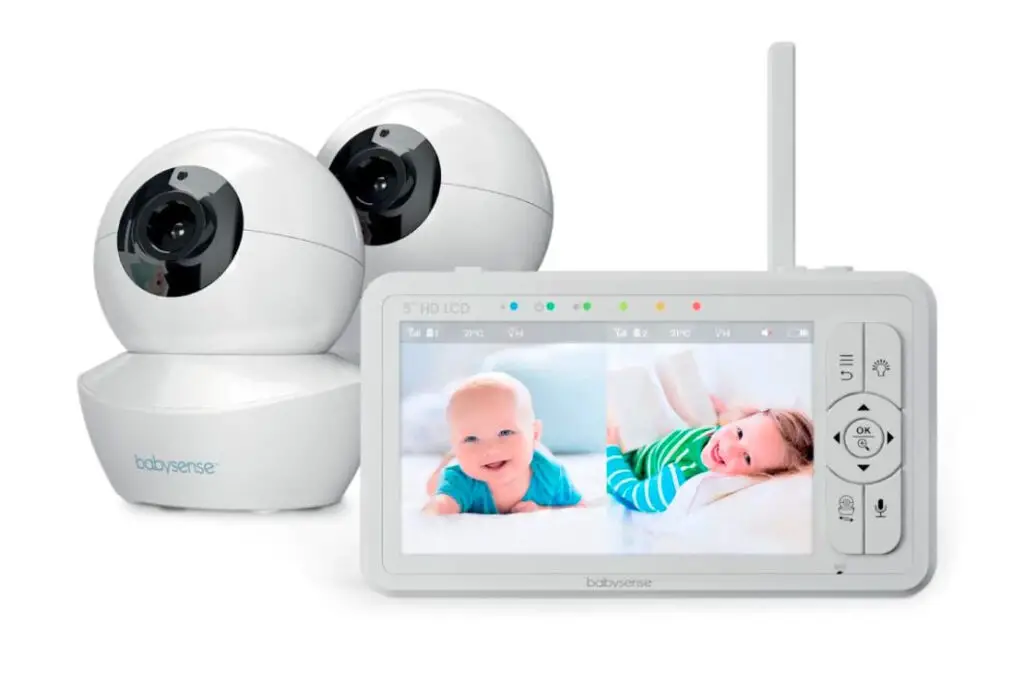
This article is a straightforward exploration of the timeline of baby monitors, from baby monitor humble beginnings to the modern-day tech-savvy options, all without the fuss of fanciful narratives or grandiose comparisons.
The baby monitor invention history
The invention of the baby monitor was a groundbreaking moment that transformed the way caregivers could keep an eye (or an ear) on their infants.
When were baby monitors invented?
The origin of the first baby monitor dates back to the year 1937. Certain baby monitors marked a significant milestone in child care and parental convenience.
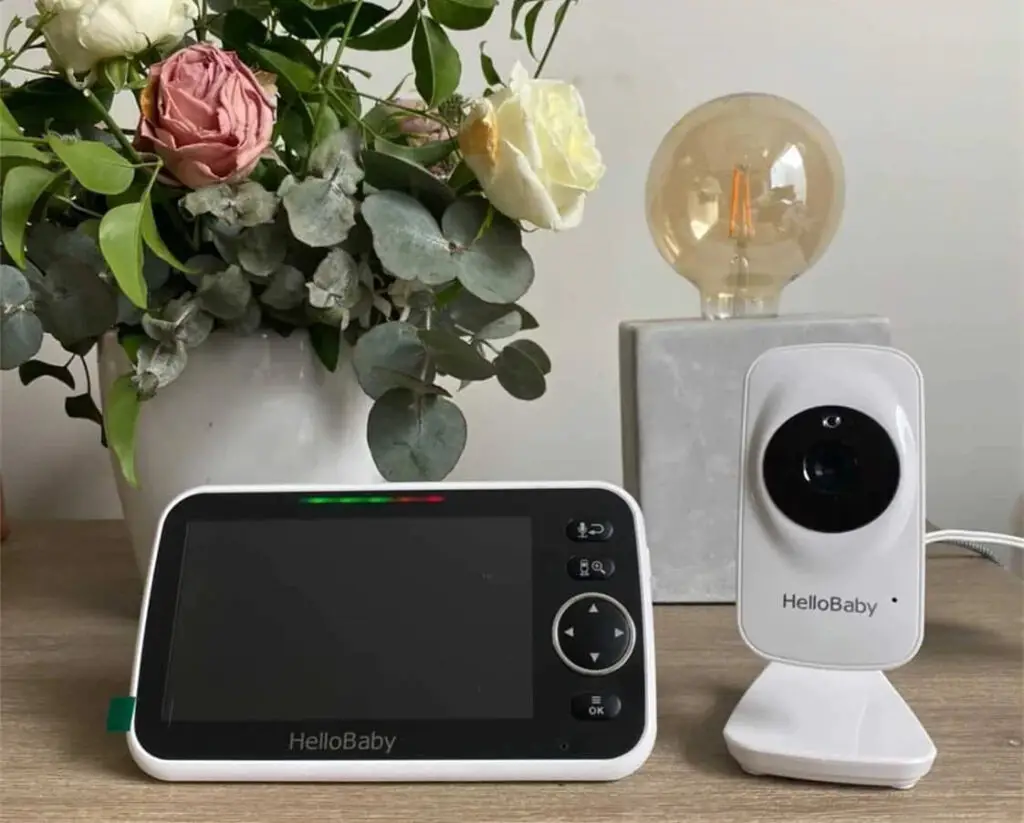
The concept behind the invention was simple yet practical: provide parents with a way to keep tabs on their infants while they slept or played in another room.
The first baby monitor, known as the “Zenith Radio Nurse,” was introduced to the world during this era. This pioneering device paved the way for subsequent innovations in baby monitoring technology.
Baby monitor basic functionality allowed parents to hear their baby’s sounds and cries from a distance, offering newfound peace of mind. While the technology has since evolved in numerous ways, the invention of the first baby monitor remains a pivotal moment in the history of both the mother childcare and parenting aids.
The invention of the first baby monitor – Zenith Radio Nurse in 1937
The emergence of the first baby monitor, the Zenith Radio Nurse, marked a significant milestone in childcare history back in 1937. This pioneering baby monitor, known simply as the “first baby monitor” constructed by Zenith Radio Corporation, revolutionized the way parents cared for their infants.
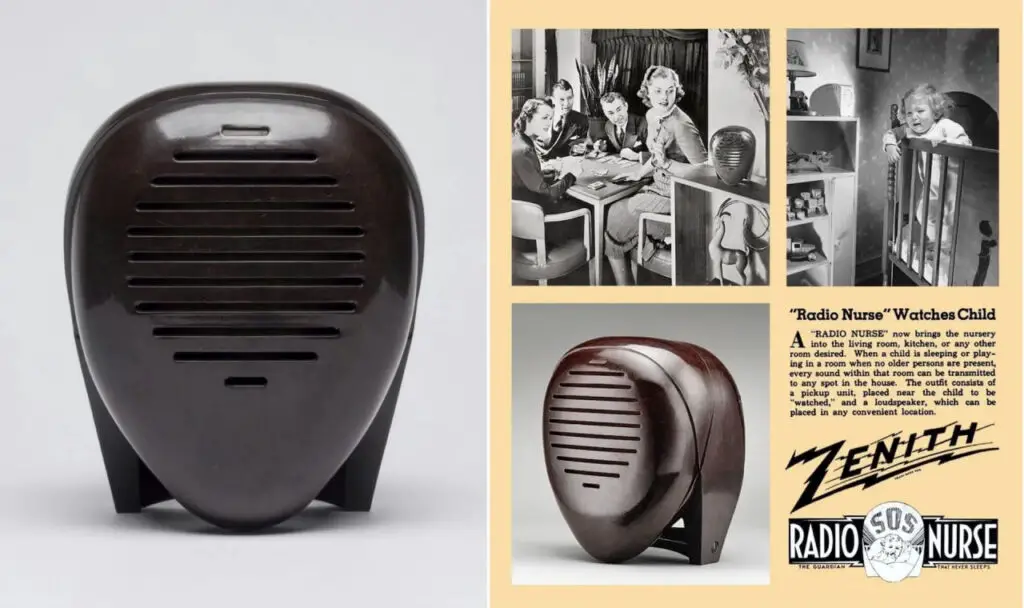
Developed by engineers at Zenith Radio Corporation, the primary purpose of the first baby monitor was to provide parents with the ability to listen to their baby’s sounds remotely and be a guardian ear for their children. The Baby monitor consisted of a transmitter placed near the infant’s crib, which transmitted audio signals to a receiver unit carried by the parents.
The invention of the first baby monitor addressed a fundamental need in parenting by offering convenience and peace of mind. The audio baby monitor introduction laid the foundation for the evolution of video baby monitor technology, paving the way for the diverse range of monitoring devices available today.
While it may seem rudimentary by the standards of today’s baby monitors, the first baby monitors were a groundbreaking step that forever changed the way parents care for their little ones.
Changes in baby monitors from 1937 to 1970
During the span from 1937 to 1970, significant advancements occurred in the realm of other baby monitors, with the Zenith Radio Nurse marking a pivotal point in this evolution.
Over the following decades, improvements were made to the Zenith Radio Nurse and other early audio baby monitor models. While the core principle remained unchanged – transmitting sounds from the baby’s room to the parent’s receiver – the technology became more reliable and accessible and took the role of a guardian ear for children.
As the years rolled on, subtle yet important changes took place. The materials used improved for durability, and the range of transmission extended to cover larger homes.
By 1970, most baby monitors had firmly established themselves as indispensable tools for parents, providing peace of mind during those precious moments when they couldn’t be in the same room as their infants.
Evolution of baby monitors
We will explore the fascinating evolution of baby monitors and the technological milestones that have shaped their development.
Why was the first baby monitor invented?
The invention of the first audio baby monitor was driven by a simple yet profound need: the desire of parents to ensure the safety and well-being of their infants while granting themselves a bit of freedom to move about their homes.
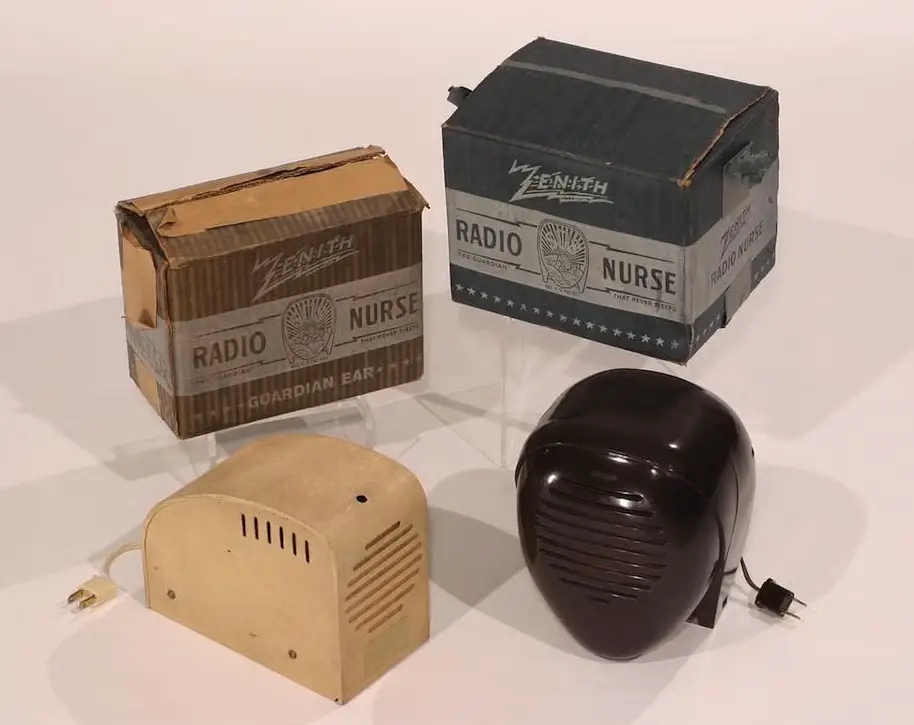
This essential piece of technology was born out of practicality and the recognition that constant physical presence in a child’s room was neither sustainable nor convenient.
Certain baby monitors invented to alleviate the need for parents to remain constantly vigilant, providing them with a newfound sense of security and peace of mind.
The primary motivation behind the invention of the first baby monitor was to offer parents a way to monitor their child’s sleep and well-being without having to be physically present in the nursery at all times.
Zenith Radio Nurse had limits
One of the primary constraints of the Zenith Radio Nurse, and indeed many early baby monitors invented in the mid-20th century, was the range of the baby monitor.
The baby monitor relied on radio waves to transmit sounds from the nursery to the receiver, which meant that the baby monitor was susceptible to interference and had a limited coverage area.
This limitation made it challenging for parents to maintain a continuous connection with their baby’s room, especially if they lived in larger homes. Furthermore, the Zenith Radio Nurse lacked the features and functionality that modern parents have come to expect from modern baby monitors.
Zenith Radio Nurse offered only basic audio monitoring, with no video capabilities or advanced communication features. Parents could hear their babies, but they couldn’t see them or communicate back effectively.
The rise of video baby monitors from the 2000s to 2015
During the late 20th century, following the initial era when modern baby monitors were invented, a notable evolution in baby monitoring technology emerged. This evolution culminated in the rise of video baby monitors from the 2000s to the mid-2010s.
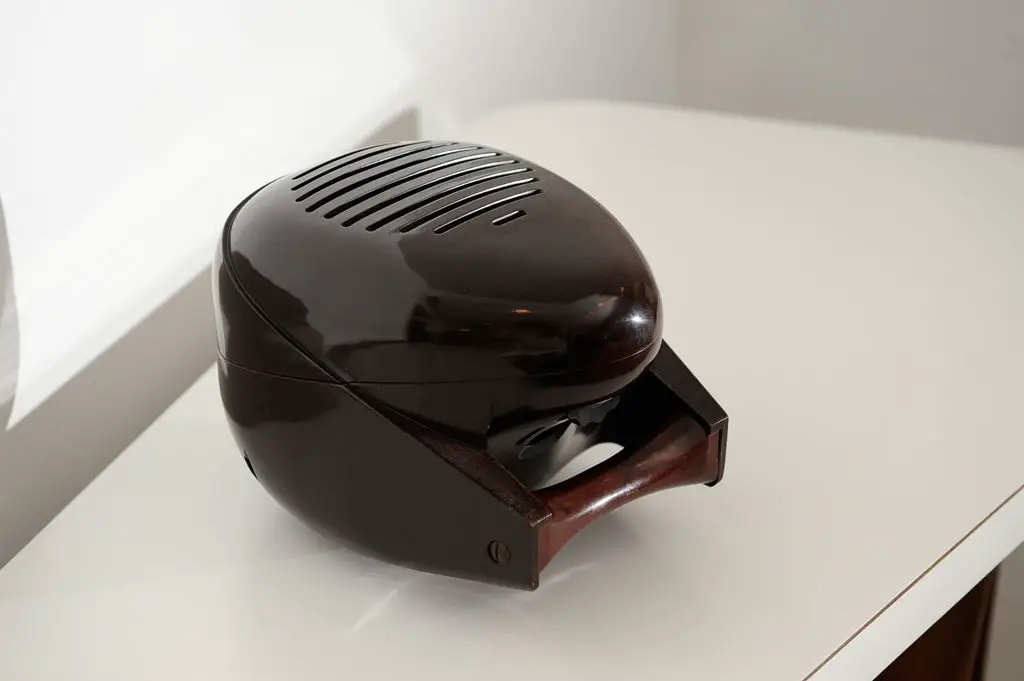
In the early 2000s, the video baby monitor started gaining popularity among parents seeking enhanced peace of mind and a more comprehensive view of their child’s well-being.
These monitors typically featured an HD video baby camera unit placed in the baby’s room, which transmitted live video feeds to a receiver or monitor held by most analog baby monitors parents or caregivers.
The introduction of video monitoring provided parents with a visual connection to their baby, enabling them to check on their child’s sleep, safety, and comfort in real time.
This added dimension of monitoring proved to be a significant reassurance for parents, especially during the night.
By the mid-2010s, the video baby monitor had become a standard choice for many parents, offering a valuable tool for keeping a watchful eye on their infants and young children.
This period marked a crucial phase in the ongoing evolution of baby monitoring technology, illustrating how baby monitors continued to adapt and meet the changing needs of modern parenting.
Two-way communication baby monitors
Unlike earlier counterparts of the baby monitor, which primarily offered one-way audio transmission, today’s digital baby monitors opened up a new dimension in parent-child communication.
The concept of two-way communication in most baby monitors was born out of the desire to enhance parental interaction and responsiveness. It allows not only parents to listen to their babies but also to speak back to them through the smart baby monitor.
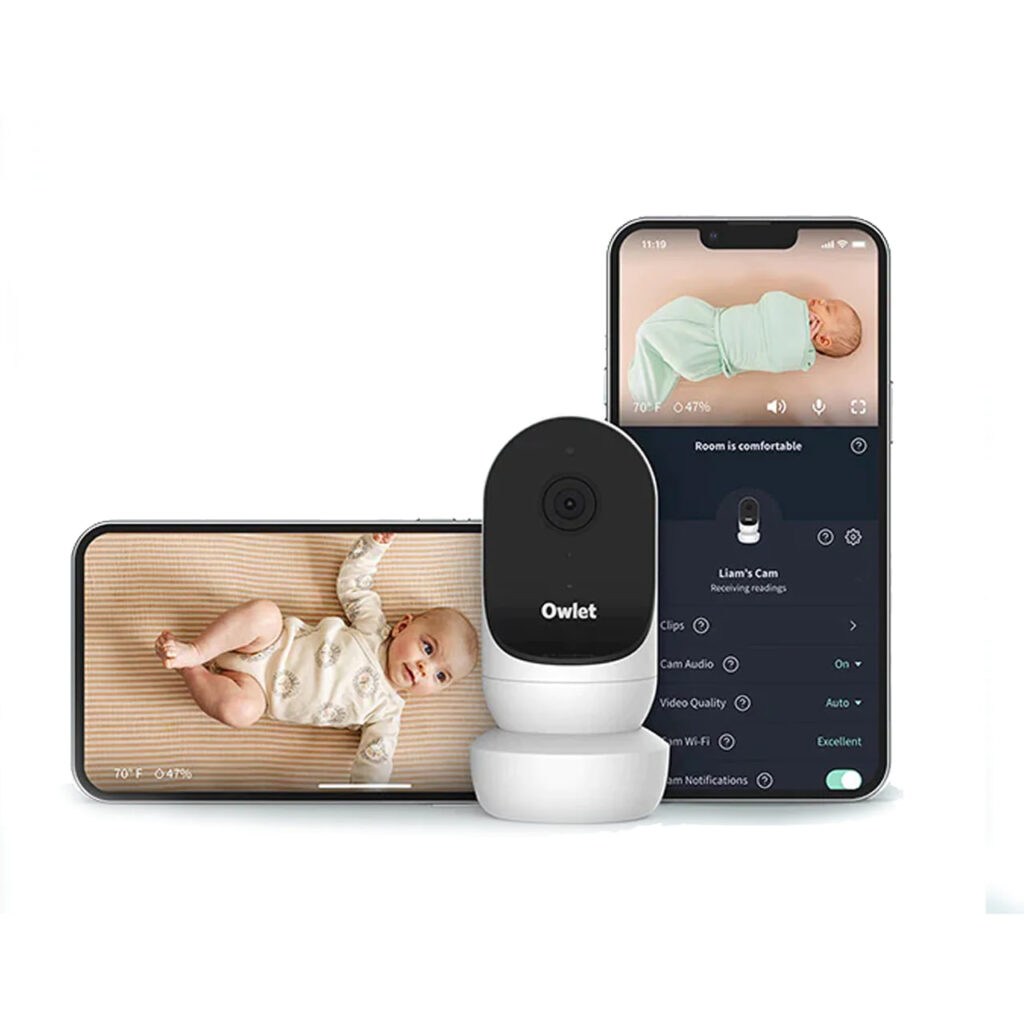
This feature of the baby monitor is particularly valuable as it enables parents to offer comforting words, soothe their children, or reassure them from a distance.
Early models of two-way communication baby monitors emerged as a response to the evolving needs of parents. These digital baby monitors typically consisted of a transmitter (placed near the baby) and a receiver (kept with the parents), both equipped with microphones and speakers. This setup facilitated real-time, bidirectional communication between the nursery and the parent’s room.
The development of this type of smart baby monitor was a natural progression in the ever-evolving world of baby monitoring technology. It provided parents with a more comprehensive means of keeping a ”guardian ear” of mothers on their baby’s well-being.
Video baby monitor
Unlike its predecessors, which solely provided audio feeds, the video baby monitor device introduced a visual dimension to baby monitoring.
The video baby monitor allowed parents to not only hear but also see their infants, offering an extra layer of reassurance. This groundbreaking advancement helped parents keep a watchful eye on their little ones, even from a distance, increasing peace of mind and convenience.
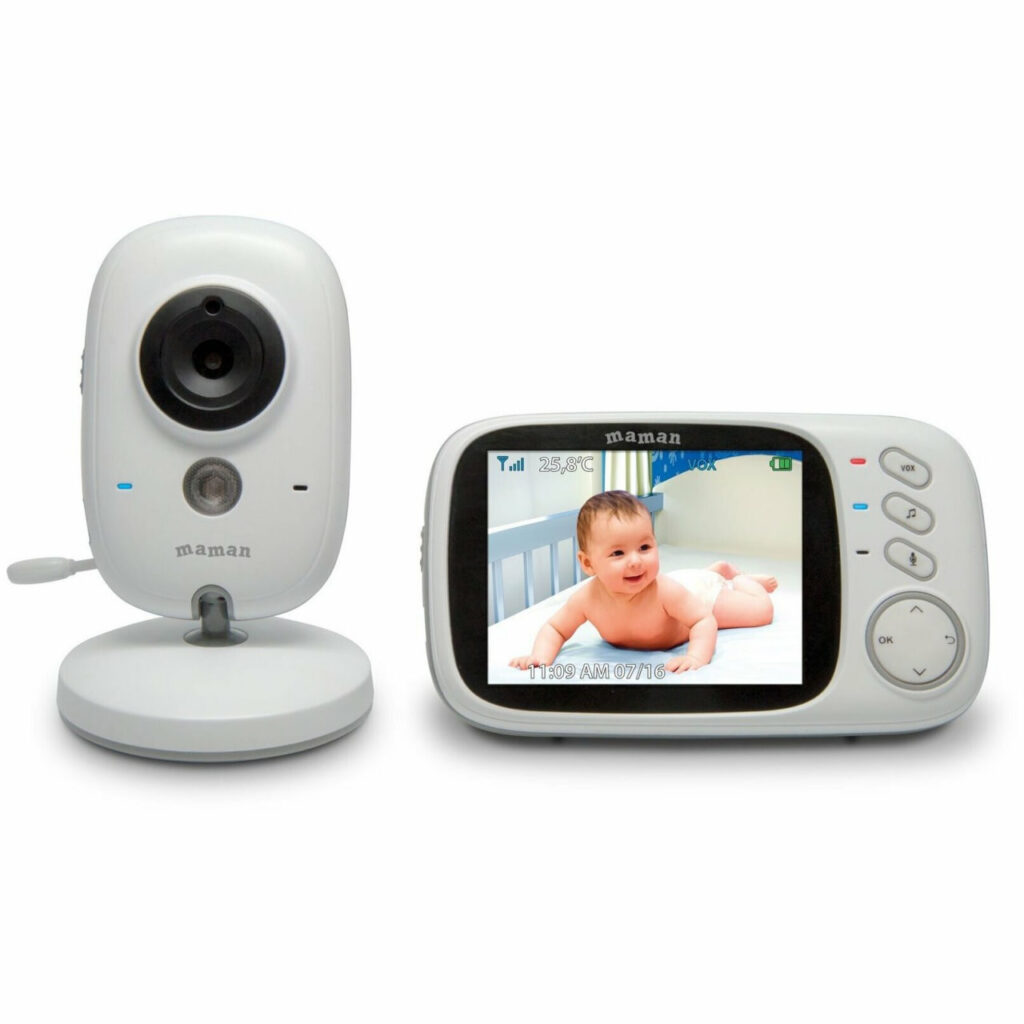
One notable example of this pioneering technology is the Hellobaby baby monitor, which quickly gained popularity among parents seeking a more comprehensive monitoring solution.
The Hellobaby baby monitor and similar models such as the Babysense video baby monitor
featured a small HD video baby camera unit that could be placed near the baby’s crib, transmitting real-time video footage to a handheld monitor or smartphone app.
The introduction of video capabilities in baby monitors not only transformed how parents monitored their infants but also set the stage for further advancements in the industry.
It paved the way for the development of more sophisticated models, such as those with pan-and-tilt functionality, night vision, and two-way communication.
The baby monitors that use Wi-Fi
The introduction of Wi-Fi in baby monitors brought forth a range of benefits for parents. These monitors allowed for remote viewing via smartphones or tablets, enabling parents to keep an eye on their baby from anywhere with an internet connection. This newfound flexibility made it easier for parents to balance household tasks while ensuring their baby’s safety.
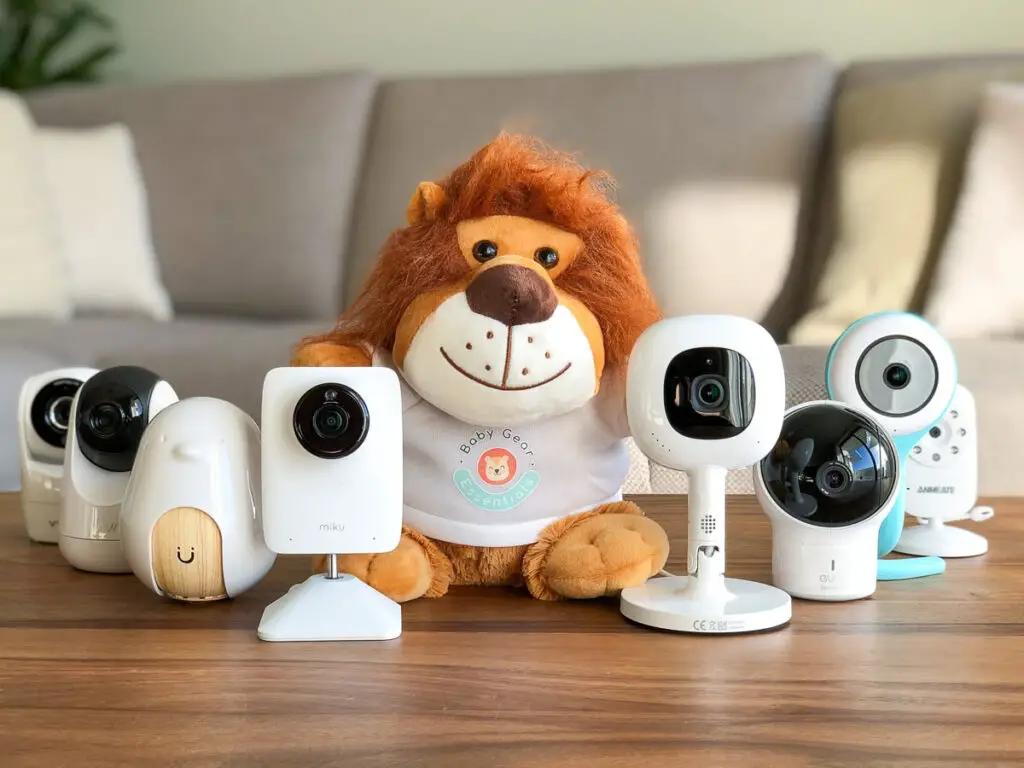
Moreover, Wi-Fi-enabled analog baby monitors often came equipped with additional features, such as nursery temperature monitoring. This feature enabled parents to monitor the environment in which their baby was sleeping, ensuring that it remained comfortable and safe.
The development and innovation in this category of baby monitors led to the introduction of various models on the market. Manufacturers competed to offer improved connectivity, better video quality, and enhanced security features. As a result, parents had a wider selection to choose from, catering to their specific needs and preferences.
Modern baby monitors
From traditional audio monitors to cutting-edge Wi-Fi-enabled devices and a glimpse into the future of baby monitoring, we will navigate the evolution of these essential parenting aids.
Other kinds of baby monitors that are available today
Today’s baby monitors offer diverse options to cater to various parenting needs and preferences.
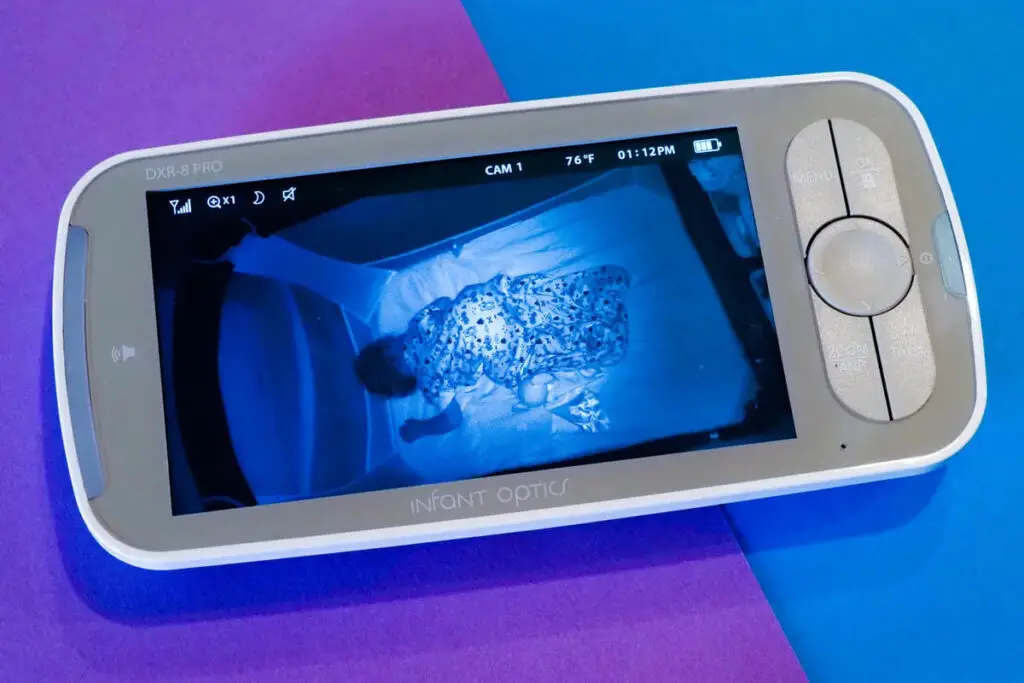
Movement and breathing monitors:
- Designed to detect a baby’s movement and breathing patterns.
- Ideal for parents who want extra assurance regarding their baby’s well-being.
- Alarms if no movement is detected within a specified time.
Nursery temperature monitoring:
- An essential feature in the most modern baby monitors.
- Monitors and displays the temperature in the baby’s room.
- Ensures the nursery remains at a safe and comfortable temperature for the baby.
Smart baby monitors:
- Integrates with smart home systems and voice assistants.
- Allows for convenient control using voice commands.
- Often equipped with AI-driven features for added convenience.
Wearable baby monitors:
- Baby monitors that attach directly to the baby’s clothing or diaper.
- Track vital signs, movement, and even sleep patterns.
- Offer a portable and non-intrusive way to monitor a baby.
Future baby monitors
One exciting development that lies on the horizon is the emergence of AI baby monitors. These sophisticated devices will harness the power of artificial intelligence to provide parents with even more comprehensive insights into their child’s well-being.
The AI baby monitor will not only detect sounds and movements but also analyze data to offer valuable feedback, helping parents understand their baby’s sleep patterns, moods, and overall health.
Additionally, future baby monitors are likely to integrate seamlessly with smart home systems, offering convenience and peace of mind. Imagine a world where your Babysense video baby monitor can sync with other household devices, such as thermostats or lighting, to create a comfortable and safe environment for your child.
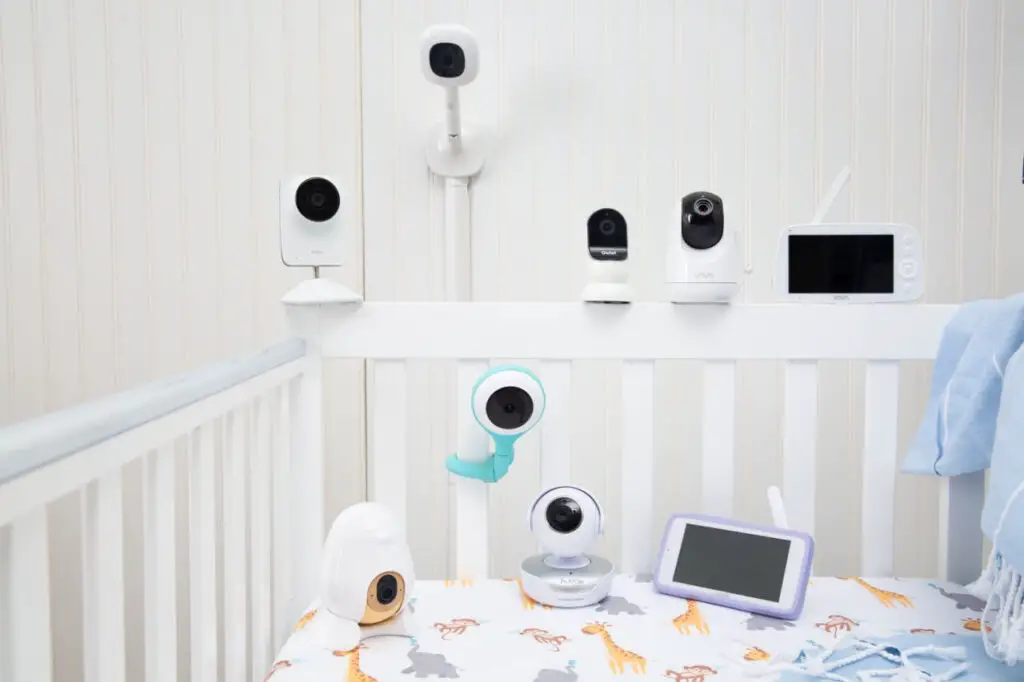
While the specifics of what lies ahead remain a subject of anticipation, one thing is certain: the future of baby monitors is promising. Innovations will continue to prioritize the safety and well-being of our little ones while providing parents with enhanced peace of mind.
Is a baby monitor safe to use around babies?
Baby monitors invented to enhance parental supervision have become a common household fixture for many families. One key concern that often arises is the baby’s safety when used around infants. Fortunately, when used correctly, baby monitors can be a safe and valuable tool for keeping an eye on your baby’s well-being.
These devices are designed with safety in mind, adhering to strict industry standards. They transmit audio and, in some cases, video signals from the baby’s room to a receiver, allowing parents to monitor their child remotely.
To ensure the safety of your baby when using a monitor:
- Follow the manufacturer’s instructions. Always read and follow the manufacturer’s instructions for installation and use.
- Secure cords and wires. Ensure that cords and wires are kept out of your baby’s reach to prevent strangulation hazards.
- Regularly check for damages. Inspect the monitor and its components regularly for any signs of wear, tear, or damage.
- Protect Wi-Fi monitors. If you opt for a Wi-Fi-enabled monitor, secure your network with a strong password to prevent unauthorized access.
FAQs
When did baby monitors become mainstream?
Baby monitors became mainstream in the late 20th century. Initially introduced in the 1930s with limited use, they gained popularity in the post-World War II era as suburban living and modern family dynamics evolved. Advancements in technology, such as cordless and portable models in the 1990s, made them more accessible.
Why was the baby monitor invented?
It provides a means for parents to monitor their child’s sounds and movements from a distance, offering peace of mind and enabling multitasking without compromising the child’s security.
Did they have baby monitors in the 70s?
Yes, baby monitors existed in the 1970s, but they were basic and operated on analog technology. These early models provided only audio communication and had limited range and reliability compared to today’s baby monitors with video and other features.
What is the future of baby monitors?
The future of baby monitors is poised for remarkable advancements. Expect greater integration with smart home systems, the AI baby monitor insights into your baby’s well-being, environmental monitoring, and wearable technology. Longer range, improved battery life, enhanced privacy measures, and eco-friendly designs will also play significant roles.
Who invented the first baby monitor, and when?
The first baby monitor, known as the “Zenith Radio Nurse,” was invented by Eugene F. McDonald Jr. in 1937. This groundbreaking device consisted of a transmitter in the nursery and a receiver, allowing parents to listen to their baby’s sounds from another room, offering them newfound peace of mind and convenience.
Conclusion
Starting with the pioneering work of Eugene F. McDonald Jr. in 1937 with the introduction of the “Zenith Radio Nurse,” baby monitors have come a long way. These devices have transitioned from basic audio transmitters to sophisticated, feature-rich tools that enhance parents’ ability to care for their infants.
Today, parents have a wide range of options, from audio monitors to video monitors, Wi-Fi connectivity, and even glimpses into the future of baby monitoring technology. However, one thing remains unchanged: the enduring commitment of parents to provide the best care for their little ones.
As technology continues to advance, so too will the capabilities of baby monitors, ensuring that parents can monitor their child’s well-being with ease and confidence.
More Related Guides

Alex is a passionate writer who shares his thoughts with strong facts and evidence. His research skill is amazing allowing him to write on life tips and development advice that the readers pursue.

